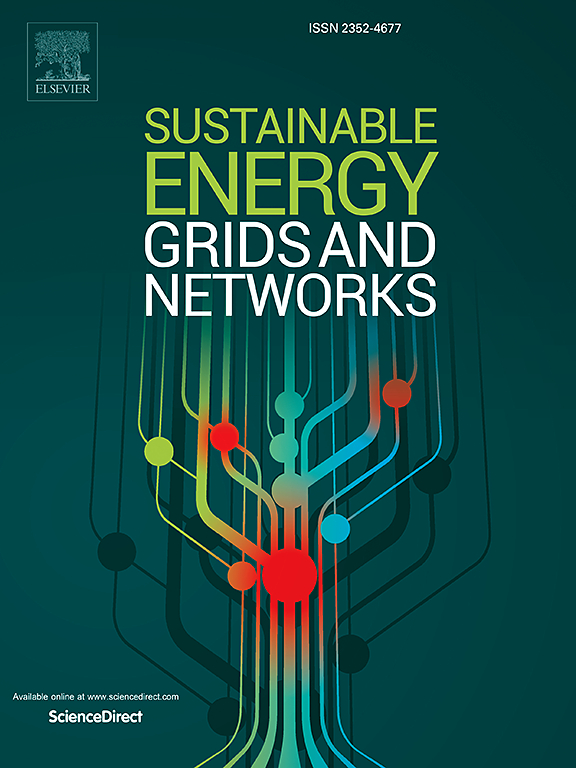Deep learning-driven robust model predictive control based active cell equalisation for electric vehicle battery management system
IF 5.6
2区 工程技术
Q2 ENERGY & FUELS
引用次数: 0
Abstract
Stabilizing the cells in Electric Vehicle (EV) batteries allows for optimal efficiency, longer battery life, and greater performance. This research presents a deep learning tuning based on Robust Model Predictive Control (RMPC) to address the issue of EV cell imbalance. Deep learning is used to recognize the patterns of battery operation and hence the equalization of active cells is maintained. The equilibrium is maintained through the observation of the state of charge (SoC) of the cell. Parameters, such as Mean Absolute Error (MAE) and Mean Square Error (MSE) are employed to assess the efficiency of active cell balancing through the use of RMPC. The validity of proposed technique was shown by the use of MATLAB/Simulink in modelling, training, and testing the models as well as enhancing the battery performance. To perform the assessment, Multi-Layer Neural Network (MLNN), Long Short-Term Memory (LSTM) network and Recurrent Neural Network (RNN) are used. The proposed RMPC-based balancing demonstrated better accuracy with lower MSE and MAE values for RNN (0.712, 0.34), LSTM (0.724, 0.59), and MLNN (0.73, 0.65) as compared to Adaptive Model Predictive Control (AMPC) mechanism. The simulation results prove that proposed method efficiently provides the maximum voltage during the active cell balancing process.
基于深度学习驱动鲁棒模型预测控制的电动汽车电池有源均衡系统
稳定电动汽车(EV)电池中的电池可以实现最佳效率、更长的电池寿命和更高的性能。本文提出了一种基于鲁棒模型预测控制(RMPC)的深度学习调谐方法来解决电动汽车电池不平衡问题。使用深度学习来识别电池的运行模式,从而保持活跃电池的均衡。通过观察电池的荷电状态(SoC)来维持平衡。使用平均绝对误差(MAE)和均方误差(MSE)等参数来评估通过使用RMPC进行主动单元平衡的效率。利用MATLAB/Simulink对模型进行建模、训练和测试,提高了电池的性能,验证了该技术的有效性。为了进行评估,使用了多层神经网络(MLNN)、长短期记忆(LSTM)网络和循环神经网络(RNN)。与自适应模型预测控制(AMPC)机制相比,RNN(0.712, 0.34)、LSTM(0.724, 0.59)和MLNN(0.73, 0.65)的MSE和MAE值更低,基于rmpc的平衡具有更好的准确性。仿真结果表明,该方法能有效地在有源电池平衡过程中提供最大电压。
本文章由计算机程序翻译,如有差异,请以英文原文为准。
求助全文
约1分钟内获得全文
求助全文
来源期刊

Sustainable Energy Grids & Networks
Energy-Energy Engineering and Power Technology
CiteScore
7.90
自引率
13.00%
发文量
206
审稿时长
49 days
期刊介绍:
Sustainable Energy, Grids and Networks (SEGAN)is an international peer-reviewed publication for theoretical and applied research dealing with energy, information grids and power networks, including smart grids from super to micro grid scales. SEGAN welcomes papers describing fundamental advances in mathematical, statistical or computational methods with application to power and energy systems, as well as papers on applications, computation and modeling in the areas of electrical and energy systems with coupled information and communication technologies.
 求助内容:
求助内容: 应助结果提醒方式:
应助结果提醒方式:


